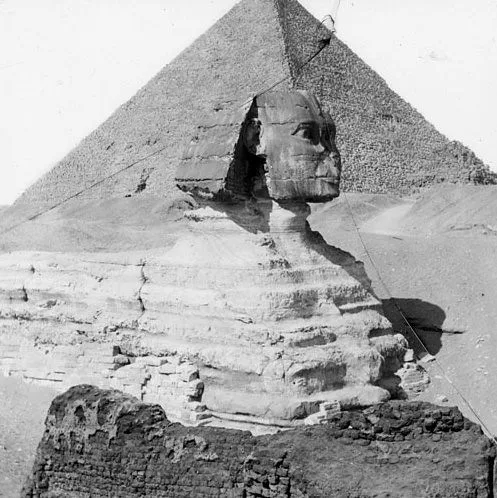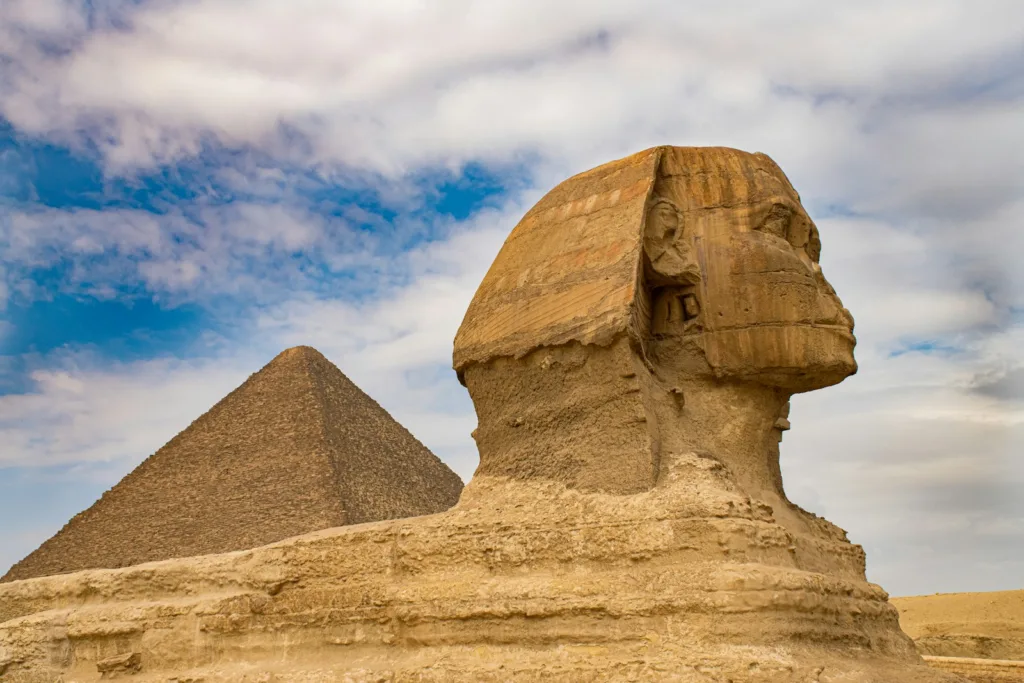Table of Contents
A huge monument cut from a single rock, the Great Sphinx of Giza in Egypt has long captivated both tourists and specialists. Although a lot of people thought that the massive statue, which had a lion’s body and a human head, was made by humans in the 2600 BC period in the ancient Egyptian dynasty, its real history is still unknown.

But a new study by New York University researchers, which was printed in the journal Physical Review Fluids, sheds light on how this amazing statue came to be more than 4,500 years ago.
The Great Sphinx of Egypt’s
The multi-layered : A puzzle

Scholars have been perplexed for ages by the precise method used to create the Sphinx’s multi-layered body, which has been traditionally ascribed to human handiwork. This idea is contested by the latest study, which contends that erosion was a major factor in the statue’s creation.
According to Leif Ristroph, the study’s principal author, the researchers’ experiment suggests a believable “origin story” for how Sphinx-like monuments arise through erosion. He revealed that, astonishingly, materials corroded by liquids that flow quickly can indeed produce patterns like sphinxes.
These discoveries not only highlight the role that nature played in the sculpture’s development, but they also raise the possibility that the ancient Egyptians were inspired to create the lion-headed figure by the distinctive rock formations.
Ristroph and his colleagues added that these findings provide light on the natural occurrences that prehistoric peoples saw in the Egyptian deserts and provide an understanding of the reasons behind their visions of this magnificent creature.
The researchers thoroughly studied how wind shapes and influences the odd rock formations known as yardangs in order to prove their hypothesis. Their studies began with these modest ridges in flat deserts, sculpted by wind. The team replicated wind erosion by subjecting the formations to a high-speed stream of water while utilizing mounds of soft clay infused with a tougher, less erodible substance to mimic the surface found in northern Egypt.
The end product was a sphinx-like structure made of clay that might serve as the basis for more sculptures made by people.
Theory: Wind erosion created the Great Sphinx.

The experiment validates a theory put forth by geologist Farouk Al-Baz in 1981, according to which wind erosion was the natural process that created the Great Sphinx. The yardang structure was reconstructed by NYU to have “a lion’s head, a slender neck, paws resting on the ground, and an arched back.”
Ristroph continued, “There are already yardangs that resemble animals in a sitting or lying position around the world, further validating our conclusions.”
He also emphasized the work’s geological significance, pointing out that it refutes the idea that rock formations have a homogeneous composition and demonstrates the variety of causes that shape them.
He clarified that the drift and flow of the rock affect both the softer and harder parts of the rock, resulting in the unexpected formations of the rock.
you may also like : Spiritual Journey : Top 12 Religious Places in India
Ristroph and his colleagues added that these findings provide light on the natural occurrences that prehistoric peoples saw in the Egyptian deserts and provide an understanding of the reasons behind their visions of this magnificent creature.
Ristroph and his colleagues added that these findings provide light on the natural occurrences that prehistoric peoples saw in the Egyptian deserts and provide an understanding of the reasons behind their visions of this magnificent creature.
Ristroph and his colleagues added that these findings provide light on the natural occurrences that prehistoric peoples saw in the Egyptian deserts and provide an understanding of the reasons behind their visions of this magnificent creature.
Unexpected origin of Egypt’s Great Sphinx discovered (msn.com)


2 thoughts on “The Great Sphinx of Egypt’s unexpected origin has been found 2024”